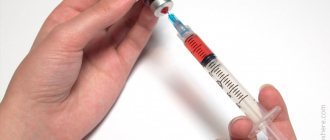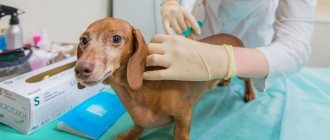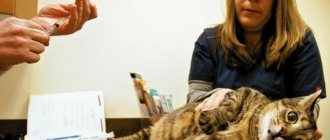There is fierce debate surrounding coronavirus vaccinations. Opponents say that it leads to infertility and other irreversible health changes. Let's figure out how things really are.
After an illness, a natural but short-term immunity to the virus is formed, but at the same time there is a risk of having a serious infection again, getting complications and infecting loved ones.
The vaccine is a safer way to protect yourself from COVID-19. Vaccination forms more stable immunity to the virus, reduces the risks of severe disease and the spread of infection from person to person.
Sputnik V is a vector vaccine. For precise delivery of the virus, another virus from the adenovirus family is used as transport. Their genome has been well studied, and the methodology for developing vaccines based on it has long been developed. With the help of genetic engineering, the adenovirus is deprived of the ability to reproduce, and part of the coronavirus is integrated into it. Once in the body, this part is recognized and remembered by the immune system. This allows you to get protection without infection and risks of coronavirus infection. But this method has one drawback.
If a person has already had an adenovirus, then when they encounter it, the immune system can immediately destroy it, and the vaccine will not work. To prevent this from happening, the developers of GamCovidVac (another name for Sputnik V) used two types of adenovirus. First, a vaccine based on the rarer type 26 adenovirus is administered; the second time, another member of the family is used. This method not only increases the effectiveness of vaccination, but also increases the duration of the body's immune defense.
Why do adverse events occur after coronavirus vaccination?
The vaccine familiarizes the immune system with the virus, and an immune response is launched in response to foreign interference.
A local reaction occurs - in response to damage to the skin and the introduction of the vaccine, cells of the first line of defense rush there. They must prevent the spread of infection that has been able to overcome the skin barrier. This is manifested by swelling and redness at the injection site.
The vaccine then enters the bloodstream. This forces the immune system to react to a possible threat and triggers defense mechanisms. Antibodies are produced to remember and destroy the invading virus. In addition, the body seeks to weaken the enemy and prevent the virus from multiplying quickly while the antibodies look for a way to destroy the enemy. One way is to heat the body, since many viruses cannot tolerate high ambient temperatures.
All together this can cause a typical reaction: fever, muscle weakness, headache. How severe the adverse events will be depends not so much on the vaccine, but on the individual characteristics of the body. After all, one person tolerates the same infection calmly, while another with a temperature of under forty. Most patients do not experience any reactions after vaccination.
Types of distemper in dogs.
Depending on the speed of distemper in dogs, there are 5 forms of this disease, which have their own signs and methods of treatment :
- Lightning form. It is characterized by the fact that the body is affected almost a few hours after the virus enters. Everything happens right before our eyes. With this form, the dog dies within a matter of time (several hours after infection), leaving no chance for its salvation, even after providing first aid at home or in a veterinary clinic;
- Acute form. Symptoms of distemper in dogs in the early stages appear already 5-7 days after infection. With prompt medical care and properly selected therapy, the probability of recovery of your four-legged friend is 50% for adult dogs and about 30% for puppies;
- Chronic form. It is quite common in older dogs (over 6 years old). It is characterized by such signs as lethargy and apathy, poor appetite in the animal, diarrhea, dull fur, problem skin, liquid transparent discharge from the nose and eyes;
- Typical form. This form has the same symptoms that we described earlier in the chronic form of distemper in dogs. However, they appear only 1-3 weeks after infection. If animals quickly contact a veterinarian, they have fairly good prospects for recovery - on average, 80% of animals remain alive and acquire lifelong immunity to this disease;
- An atypical form of distemper in dogs. It is the most insidious form of the disease, since for a very long time no symptoms of the disease are noticeable, while the animal is infected, sick and contagious to other animals. This can last for a really long period of time until the virus attacks the dog's nervous system. After this, the death of the animal occurs.
What adverse events can the Sputnik V vaccine cause (GamCovidVac)
15-20% of vaccinated people experience a flu-like syndrome (headache or muscle pain, malaise) or pain at the injection site. Serious adverse events following GamCovidVac vaccination are rare. 0.001% had a severe anaphylactic reaction. This is one person per hundred thousand vaccinated.
Vaccination has been going on at GMS Clinic since January 2022; more than 5 thousand people have been vaccinated; adverse events were observed in less than 15%. More often observed: rise in body temperature, pain at the injection site, rise in blood pressure. Most of these events were not considered serious, so patients were able to successfully receive the second component of the vaccine. Once I had a severe allergic reaction. This patient was not given the second component. The symptoms went away safely, but for further vaccination this patient will most likely be recommended a different drug.
Adverse reactions usually subside within three days after vaccination. Their intensity and duration depend on various factors and indicate the reaction of the immune system. Common and harmless adverse events include:
- temperature (if it does not cause discomfort, you don’t have to take anything);
- muscle pain;
- weakness;
- headache;
- local reaction: redness and swelling at the injection site.
Adverse events such as increased body temperature or local manifestations at the injection site usually disappear after a maximum of three days. If side effects are very bothersome, you can take a non-steroidal anti-inflammatory drug (NSAID), such as paracetamol or ibuprofen. You can apply a cool compress to the injection site.
Any medicine, including vaccines, can cause allergic reactions. Not a single manufacturer, unless he is a charlatan, will forget to indicate the possibility of an allergic reaction in the instructions for use of the drug. Also, any food product, any molecule heavier than salt, can cause an allergic reaction. If you suspect an allergy, you should consult a doctor.
How does distemper begin in dogs?
In the first hours and even days, it is impossible to guess that the dog has caught distemper (the exception is the fulminant course of the disease). However, after about a week or two, signs of the plague appear. Depending on which organs and systems are affected by distemper in dogs, the symptoms will be corresponding. According to the main symptoms, the disease is divided into 5 types.
- Intestinal distemper in dogs. With this type of disease, the animal's digestive system will be affected. You will see that the dog will become upset (often diarrhea will be bloody), it will refuse food, there will be a foul odor from the mouth, severe thirst, and the animal will begin to lose weight very quickly. Due to severe dehydration, this type of distemper is deadly for puppies under 1 year of age. The first signs of the disease appear 1-2 weeks after infection.
- Pneumonic distemper in dogs. If the lungs are affected, the animal will begin to develop pneumonia. It is accompanied by heavy breathing, the appearance of coughing and wheezing, purulent discharge will begin from the eyes and nose, body temperature will rise by 1-1.5 degrees, signs of gastrointestinal distress may also be observed - diarrhea and vomiting, severe trembling and convulsions may appear. The first signs of the disease become noticeable 2-7 days after infection.
- Nervous distemper in dogs. This is the most dangerous type of this disease. It occurs 3-6 weeks after infection and is extremely rarely treatable. When the nervous system or brain suffers, then you will find a change in behavior in the animal - the dog will either be very aggressive, or, conversely, very lethargic; convulsions, loss of coordination of movement, epilepsy attacks, even paralysis of the limbs, photophobia and high temperature may appear. Death occurs for two reasons - suffocation or cardiac arrest. Recovery occurs only in 10-20% of cases.
- Cutaneous distemper in dogs. Skin is the largest organ not only in humans, but also in animals. When a dog's skin is damaged, multiple ulcers, crusts, and rashes appear on the face and groin. The skin on the affected areas becomes rough, rough, the pet may refuse to eat, becomes very weak, and lies down all the time. Despite the aesthetic component of this type of disease, it is the most harmless among all varieties. Often the dog tolerates it without any complications. The disease can go away on its own, even without treatment, in one to two weeks after infection, if you have an adult dog with a strong immune system. Puppies under 1 year of age must be taken to a veterinary clinic for examination.
- Mixed look. This variety is identified in 90% of advanced cases. This is due to the fact that the virus attacks all vital organs and systems of the body very quickly after the invasion. In infected animals, all the signs that are inherent in the intestinal, pulmonary, skin and nervous forms are visible simultaneously. And if you don’t start treating the disease in time, unfortunately, it will be impossible even for the best veterinarian to save your beloved animal.
Undesirable effects of other Russian vaccines
"CoviVac"
This is an inactivated vaccine. That is, a killed coronavirus is delivered to the body. This is an old and proven technology, many vaccines against viral diseases have been made using it: polio, influenza and others. Dead viruses cannot cause disease, but their entry is enough for the body to learn to recognize them. As a result, when a live virus enters from an infected person, a strong immune response is formed immediately.
To enhance the immune response, aluminum hydroxide was added to CoviVac. One dose contains up to 0.5 mg. This dose is much less than permissible.
The instructions for the drug say that the vaccine can rarely cause headaches and short-term fever. Pain and hardness at the injection site are more common.
"EpiVacCorona"
This vaccine differs from Sputnik V and CoviVac in that it is not created using viruses. It is not killed or neutralized virus particles that are introduced into the body, but artificially created proteins. Using them, the immune system is trained to recognize real viruses. This method of creation reduces the reactogenicity of the vaccine, so it is recommended for vaccination in elderly or weakened people.
In a publication in the Russian journal Infection and Immunity, the vaccine developers claim that the only adverse events were mild pain at the injection site. And the CoviVac vaccine does not cause headaches, muscle weakness and other common symptoms.
Vaccination preparations
Preparations for animal vaccinations are produced by both Russian and foreign pharmaceutical companies. Among the domestic products, the following are considered reliable and safe:
- Vakchum.
Monovalent dry viral vaccine for immunization against canine distemper. Manufacturer: Moscow PA Institute of Poliomyelitis. - Cardanone
(Camedon). Polyvalent drug for the prevention of canine distemper, parvovirus infection, viral hepatitis. . - EPM.
Dry monovalent vaccine against plague from pharmaceutical. It has age restrictions: it can be used for dogs older than 3 months.
Of the foreign preparations for vaccination against distemper, the following have received recognition from international veterinary specialists:
- Nobivak.
Dry bivalent vaccine against canine distemper and parvovirus enteritis. (Holland). Read more: Nobivak for dogs - Eurican.
Polyvalent vaccine against 6 viruses. (France). Read more: Eurikan for dogs - Vanguard.
Vaccine for the prevention of 5 viral diseases of dogs. (USA). Read more: Vanguard for dogs
Which vaccine dose is more difficult to tolerate?
Sputnik is a two-stage vaccine. The first injection of the vaccine causes an unstable immune reaction, and the second dose consolidates the result. This method of administration increases the effectiveness of the vaccine and the duration of the body's protection. The interval between vaccines should be 21 days or slightly more. A deviation of several days (in one direction or another) does not pose a danger.
It is believed that younger and healthier patients respond more strongly to the vaccine, but there is no official data. Adverse effects the second time may be stronger than after the first dose, or they may be weaker. This is a normal reaction and may be associated with another type of adenovirus.
Typically, older people tolerate vaccination better than younger people. The risk of such an undesirable phenomenon as elevated body temperature decreases significantly with age.
Physiological reasons
A feature of non-pathological factors is the rapid disappearance of symptoms after their elimination. If the dog is shaking without additional clinical manifestations, then the source of the problem may be stress, freezing, fear or nervous excitement. If the dog begins to shake after walking in the summer, then there is a risk of developing heat stroke.
Cold
Hypothermia is provoked by walking outside in the winter season, at low temperatures. The problem occurs in decorative and smooth-haired breeds, and is accompanied by involuntary tucking of the tail, paws, and slight trembling. The body tries to stabilize thermoregulation by constant muscle contraction.
At home, the pet does not react well to a sudden change in temperature after bathing: at the end of the water procedures, the dog should be thoroughly dried and, if possible, dried with a hairdryer. If the dog is afraid of noise, then a warm blanket or dry terry towel will come to the rescue.
Emotions: excitement, worry, fear
Trembling for no reason rarely occurs; more often the problem is associated with certain factors:
- a stressful situation - the dog hides after punishment or when anticipating an unpleasant educational process;
- fear – loud sounds, noise, the appearance of potential danger in the field of view;
- positive emotions - excitement before meeting the owner, in anticipation of a treat.
Attempts to attract attention are also accompanied by trembling. This feature is typical for breeds with docked tails - boxers, Rottweilers. In a dachshund puppy, the manifestation is associated with a psychological state, cunning.
When to see a doctor
After vaccination, it is better to wait half an hour rather than leave immediately. This is necessary to make sure there is no allergic reaction. If it becomes difficult to breathe, there is a feeling of a strong heartbeat, tinnitus, rash, dizziness, or swelling of the face begins, you need to contact the vaccination center for medical help.
You should also consult a doctor if after vaccination:
- headache, weakness or fever does not go away within three to four days;
- high fever is not brought down by medications;
- Redness and thickening at the injection site increases on the second or third day.
Treatment
For correct treatment, it is necessary to confirm the diagnosis. This can be done at a veterinary clinic by donating your pet’s blood for a hematological analysis.
Treatment must be started urgently and it must be effective, so immediately seek help from a veterinary specialist, do not try to cope with folk treatment yourself at home!
In the clinic, all activities will be aimed at increasing the overall resistance of the body (resistance is the body’s ability to resist pathological processes).
First aid is aimed at stopping the acute condition of the pet. If the intestinal form predominates, then first of all, with the help of medications, vomiting and debilitating diarrhea are stopped, the body is brought out of a state of dehydration, for this it is necessary to put the dog under a drip with a solution of sodium chloride or glucose.
Then calcium gluconate, the dose of which must be strictly calculated by the veterinarian, and B vitamins are administered intramuscularly.
They also prescribe solutions aimed at reducing the tone of skeletal muscles, so doctors prevent paresis.
If you are offered to give your pet a novocaine blockade, do not be alarmed; these actions are resorted to in the presence of nervous phenomena (nervous tics), because treating a dog whose nervous system is damaged is not an easy task.
Medications are often needed to help reduce agitation. A solution that is administered intramuscularly or powder. If the plague is complicated by bacterial infections, antibiotics are prescribed. In addition, immunomodulators are prescribed, which help restore the body’s immune system.
Why fill out a vaccination diary at State Services?
You can register possible adverse events on the government services website. This is necessary in order to collect as many statistics as possible and draw broader conclusions about the safety of the vaccine. This is especially important if the administration of the vaccine in a particular case is accompanied by serious adverse reactions.
In most cases, adverse events from vaccination go away within a short time without harm, unlike coronavirus infection. So far, there have been no serious complications or deaths reliably linked to Sputnik V or other Russian vaccines.
Pregnancy and lactation
It is recommended that your dog be vaccinated before pregnancy occurs. It is possible that vaccine components can penetrate the placenta and cause fetal death or developmental defects. If such a measure is necessary, it is recommended to use only inactivated drugs, which are selected by the veterinarian.
It makes no sense to vaccinate a nursing bitch to protect the offspring. In order for puppies to acquire passive immunity, the female’s body must begin to produce antibodies. To do this, at least a week must pass after the procedure. Antibodies are obtained from the mother through colostrum in the first 36 hours of the offspring's life.
It is better to vaccinate a bitch before pregnancy.
Myths about COVID-19 vaccination
Adverse events are normal possible consequences of receiving any vaccine. But in addition to the usual and carefully studied effects, there is an opinion that Sputnik V may cause unexpected long-term consequences:
Myth #1: Vaccines cause infertility.
None of the known vaccines affects the reproductive function of men or women. The issue of safety for offspring remains one of the most important for developers of medicines, including vaccines. This is considered a serious adverse event. Therefore, if there is minimal doubt, the drug will not pass phase 1 of clinical trials on laboratory animals. In this case, further development will be stopped. Vaccines that have passed the second and third phases are guaranteed to be safe for future parents.
There is no evidence that any vaccine causes fertility problems. But how a pregnant woman’s body will react to a coronavirus infection is a big question.
Myth #2: Vaccines affect DNA
None of the vaccines registered today are capable of integrating into DNA. Vaccines do not penetrate the cell nucleus, where the DNA is located. Therefore she is safe. The origin of this myth is unknown to science.
Myth No. 3: You can get infected with coronavirus from the vaccine and get a positive PCR test
The vaccine does not cause active disease, but stimulates specific immunity in other ways. PCR after vaccination will be positive only if you become infected before vaccination. The sooner you get vaccinated, the faster specific immunity will form. The only risk I see is a short-term increase in body temperature. It can be detected, for example, at the airport and prevent departure. Therefore, ideally, you should get vaccinated two to three days before your flight.
Myth No. 4: You can’t get vaccinated if you have chronic diseases.
In this case, it is better to consult with your doctor before vaccination. If a chronic disease worsens, vaccination may need to be postponed. Or perhaps not. But chronic diseases themselves are not contraindications. On the contrary, they greatly increase the risk of severe coronavirus infection. In this case, it is safer to get vaccinated and protect the weakened body.
How is distemper transmitted in dogs?
So, let's look at where and how a dog can become infected with canine distemper? The virus can enter the body of a healthy animal in two ways: through the digestive tract and the respiratory system.
There are also two ways in which dogs get distemper : direct and indirect contact.
- Direct contact – from animal to animal. It is most common and dangerous when you have more than one four-legged pet living in your house. If the animal has just become infected and there is still no manifestation of distemper in dogs and no clinical signs of the disease are visible, the dog is already dangerous and contagious to surrounding animals. Recovery from distemper in dogs also does not immediately lead to the disappearance of virulence and the dog remains a carrier of this disease for another 3 weeks after its completion. The only truly pleasing and positive moment for the animal and the owners is the lifelong immunity that remains with the recovered pet.
- Indirect contact. This is when the virus is brought into the house by the owner himself from the street on the sole of his shoe, or if your animal uses the personal belongings of an infected dog (or carrier), or if he sniffs the feces of a sick animal on the street.
Let us reassure you right away and say that in most cases, infections occur due to animals being in an unhealthy environment - i.e. among homeless animals. And of course, puppies born on the streets are especially sensitive. The main factors that actively influence the possibility of a domestic dog contracting canine distemper are:
- small or old age of the dog;
- poor and unbalanced diet, lack of vitamins and minerals in the animal’s body;
- unfavorable living conditions that are typical for homeless animals;
- the presence of chronic diseases and congenital pathologies;
- not regularly carrying out hygiene procedures and preventive examinations, which would help identify a decrease in the pet’s immunity.
Of course, the reader is interested in whether distemper is transmitted to humans from dogs and how dangerous this disease can be for owners of four-legged pets? With full authority, we can reassure you - this disease is not transmitted to people from dogs, people do not get sick from it at all!
Prevention of canine distemper
The basis of prevention is timely vaccination of the animal! Preparations that promote the development of immunity against plague are contained in almost all complex vaccines, so you simply need to vaccinate your pet in a timely manner according to the usual vaccination schedule and repeat vaccinations annually!
In addition to this basic rule, a few more points must be observed to maintain the dog’s immunity:
- healthy balanced diet;
- timely deworming;
- staying active is very important for your pet;
- do not allow inbreeding;
- Do not use other people's dog grooming products.











